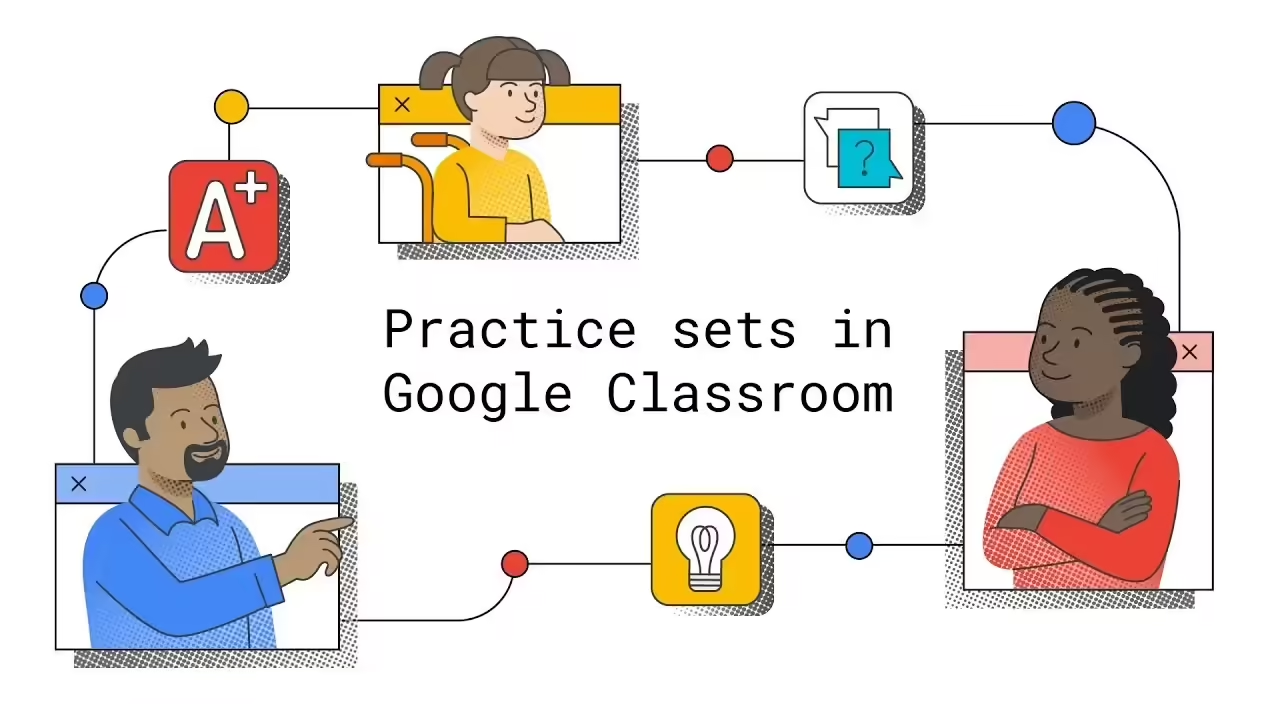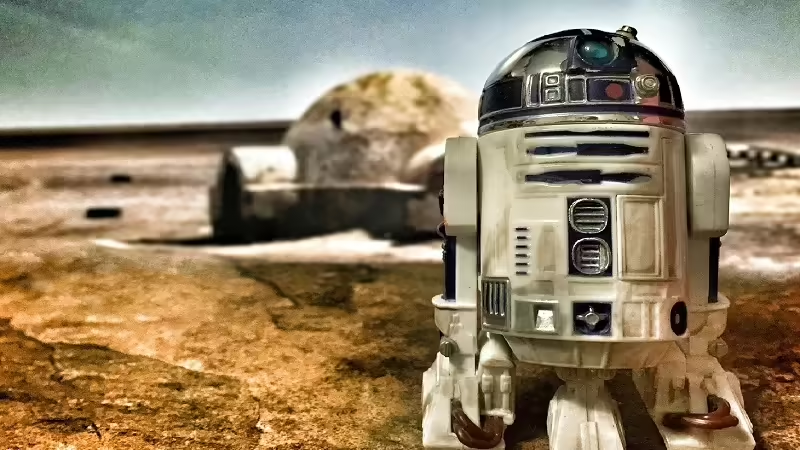
In the present day, technology has revolutionized the way we learn and teach. One of the standout tools in this educational shift is Google Classroom, a platform designed to streamline the management and organization of classes in virtual environments.
Brief Description of Google Classroom: An Integrated Virtual Classroom
Launched by Google in 2014, Google Classroom is a learning management platform designed to efficiently connect teachers and students in a virtual environment. Its simple interface and seamless integration with other Google tools, such as Google Drive and Google Docs, have made it a popular choice for both educators and students.
The platform provides a centralized space where teachers can create and distribute assignments, share educational materials, communicate with students, and assess progress quickly and effectively. Students, on the other hand, can easily access learning resources, participate in discussions, and submit their work digitally.
Purpose and Objectives of Google Classroom: Transforming the Educational Experience
The main purpose of Google Classroom is to provide an online educational environment that facilitates collaboration, communication, and efficient management of the teaching and learning process. Some key objectives of the platform include:
- Facilitating Content Distribution: Google Classroom allows teachers to easily share educational resources, assignments, and announcements with students. Materials are stored in the cloud, ensuring convenient access anytime, anywhere.
- Encouraging Collaboration and Communication: Through features such as online discussion and comments, Google Classroom promotes interaction between teachers and students, as well as among students themselves. This fosters a collaborative environment beyond the physical limitations of a traditional classroom.
- Simplifying Task and Grading Management: The platform streamlines the creation and assignment of tasks, as well as grading and providing quick feedback. Teachers can effectively track student progress, improving efficiency in assessment.
- Integrating Google Tools: Integrated with other Google tools like Google Drive, Docs, and Calendar, Google Classroom offers a comprehensive educational experience. This simplifies collaboration and workflow, allowing teachers and students to focus on educational content.
- Access from Any Device: Google Classroom is designed to be accessible from various devices, including laptops, tablets, and smartphones. This ensures that students can engage in learning anytime, anywhere.
Registration and Access to Google Classroom: Facilitating Entry into Virtual Learning
Google Classroom has simplified the registration and access process for teachers and students, ensuring easy and quick entry into the platform. Below are the steps to create an account and access Google Classroom using Google accounts.
Creating a Google Classroom Account: Step by Step
- Access the Google Classroom Home Page: Go to the Google Classroom home page using your preferred web browser. The address is https://classroom.google.com/.
- Sign In with Your Google Account: If you already have a Google account (Gmail), click on “Sign In” in the upper right corner. Enter your email address and password to access your account.
- Create a Google Account if You Don’t Have One: If you don’t have a Google account, click on “Create account” and follow the steps to create a new account. You’ll need to provide basic information such as your name, date of birth, and phone number.
- Complete Your Account Setup: After creating your account, follow the prompts to complete the setup, such as selecting a profile picture and customizing your information.
- Access Google Classroom: Once you’ve logged into your Google account, you can access Google Classroom by clicking on the grid icon in the upper right corner and selecting “Classroom” or by going directly to https://classroom.google.com/.
Accessing Google Classroom via Google Accounts:
Google Classroom is closely integrated with Google accounts, making access to the platform quick and secure.
- Sign In to Your Google Account: Access your Google account using your email address and password.
- Access Google Classroom: Once logged into your Google account, you can access Google Classroom directly from the Google apps menu. You can also enter the URL https://classroom.google.com/ in your browser.
- Explore Your Courses: Upon entering Google Classroom, you’ll see a clear and organized interface with your current courses. You can join new courses or create your own, depending on your needs.
- Participate in Your Virtual Classes: Within each course, you’ll find announcements, tasks, and materials shared by the teacher. Engage in discussions, complete tasks, and collaborate with classmates, all within the Google Classroom virtual environment.
Google Classroom User Interface: Navigating the Virtual Classroom
The Google Classroom user interface is designed to be intuitive and easy to use, providing an efficient experience for both teachers and students. Here is an overview of the design and navigation of Google Classroom, highlighting various sections and functions that make up this educational platform.
Main Dashboard:
- Current Courses: In the main dashboard, users find a list of courses they are enrolled in or have created. Each course is presented with its name and code, facilitating quick identification.
- Recent Activity: An overview of recent activity in the courses is displayed, including announcements, tasks, and discussions.
Create or Join a Course:
- “+” Button (Create or Join): In the upper right corner, there is a “+” button that allows users to create a new course or join an existing one using a code provided by the teacher.
Sidebar Menu:
- Home (Stream): This section contains course announcements and updates. Teachers can share relevant information, and students can comment or ask questions.
- Work (Classwork): This section organizes course tasks and materials. Teachers can create and organize tasks, assignments, and educational resources.
- People: Provides a list of all participants in the course, including both teachers and students. It also enables direct communication among course members.
- Grades: Teachers can manage and share grades efficiently, and students can view their own progress and evaluations.
- Settings: Here, course settings such as visibility, notifications, and other preferences can be adjusted.
Individual Course:
- Announcements: Teachers can post important announcements for the entire course in the stream.
- Tasks and Assignments: Found in the Classwork section, organized by categories and due dates.
- Shared Resources: Google Classroom allows integration with Google Drive, making it easy to share educational materials, documents, and presentations.
- Discussion Forums: Students and teachers can participate in discussions on specific topics.
- Grades and Feedback: Teachers can assign grades and provide feedback directly from the platform.
Contextual Actions:
- Quick Action Buttons: In various sections, users will find quick action buttons that allow them to create announcements, assign tasks, or add materials easily.
General Design:
- Clean and Intuitive Design: The user interface features a clean and organized design, with colors and visual elements that facilitate the identification of sections and functions.
- Accessibility: Google Classroom is designed to be accessible from different devices, such as computers, tablets, and smartphones, providing a consistent experience.
The Google Classroom user interface has been carefully designed to optimize the online learning experience, providing teachers and students with the necessary tools to collaborate, communicate, and learn effectively in a virtual environment. Its intuitive design and well-organized features make the platform a popular choice in the digital educational field.
Creating a Virtual Classroom in Google Classroom: A Simple Process for Educators
Creating a virtual classroom in Google Classroom is a step-by-step process that allows educators to set up and customize their digital teaching space. Below are the steps to create a virtual classroom and customize settings in Google Classroom:
Step 1: Log In to Google Classroom:
Access https://classroom.google.com/ and log in with your Google account.
Step 2: Click the “+” Button to Create a Classroom:
On the main dashboard, click the “+” button located in the upper right corner.
Step 3: Select “Create Class”:
A dropdown menu will appear. Select “Create class” to begin the setup process.
Step 4: Complete Basic Classroom Information:
Fill in basic classroom information, such as the classroom name and section. You can include additional details, such as the subject or period.
Step 5: Set Classroom Visibility:
You can choose whether the classroom will be visible to all students or if they will need a code to join. This allows control over who has access to the classroom.
Step 6: Add Students:
Google Classroom will automatically provide you with a unique class code. You can share this code with students for them to join the classroom. Alternatively, you can invite students directly through their email addresses.
Step 7: Customize Additional Classroom Settings:
Click on “Settings” in the upper right corner of the classroom to access additional customization options.
Step 8: Additional Settings:
In the settings section, you can customize different aspects of the classroom, such as:
- General Settings: Adjust classroom visibility and student participation.
- Themes: Choose a theme to customize the classroom’s appearance.
- Notifications: Configure email notifications for teachers and students.
- Backup: Decide whether to enable Google Drive backups for classroom documents.
Step 9: Save Changes:
Make sure to click “Save” after making any adjustments to the settings.
Step 10: Start Creating Content:
Once the classroom is set up, you can start creating content such as announcements, tasks, and educational resources. Use the “Stream” section to share updates and keep students informed.
With these simple steps, educators can easily create and customize a virtual classroom in Google Classroom. The platform offers a user-friendly interface and intuitive tools that allow teachers to focus on teaching and effective interaction with students in the digital environment.
Student and Teacher Management in Google Classroom: Organizing the Digital Educational Community
Google Classroom offers an efficient user management system that allows teachers to invite and manage students, as well as collaborate with other educators. Below is a detailed explanation of how to invite and add students and teachers, along with the roles and permissions available in Google Classroom.
Inviting and Adding Students:
Class Code:
- Each classroom in Google Classroom has a unique associated code. Teachers can share this code with students, who can join the classroom by entering the code. Email Invitation:
- Teachers can also invite students directly through their email addresses. When creating a classroom, there is an option to add students by email address. Sharing in Google Workspace for Education:
- In larger educational environments, teachers can use Google Workspace for Education to manage users and classes centrally.
Inviting and Adding Teachers:
Collaborator Code:
- To add another teacher to a classroom, a collaborator code can be shared. This code allows other teachers to join and participate in classroom management. Email Invitation:
- Similar to inviting students, teachers can invite other teachers directly through their email addresses. Sharing in Google Workspace for Education:
- Integration with Google Workspace for Education facilitates collaboration and management of multiple classrooms and users.
Roles and Permissions in Google Classroom:
Teacher:
- Teachers have full access to the classroom. They can create and edit content, grade assignments, and manage students. Student:
- Students participate in the classroom, submit assignments, engage in discussions, and access materials shared by teachers. Collaborating Teacher:
- A collaborating teacher has the same permissions as a teacher but cannot remove the creator of the classroom. It is useful for facilitating collaboration between educators. Collaborating Student:
- A collaborating student has additional permissions to collaborate in creating and editing materials in the classroom. Guest:
- Guests can access certain classroom resources but cannot fully participate. This role is useful for including parents or other observers in the classroom.
How to Change Roles and Permissions:
- Access Classroom Settings:
- The main teacher can adjust roles and permissions by going to the classroom settings and selecting “People.”
- Edit Roles:
- Next to the name of each student or teacher, there is a dropdown menu that allows changing the role of that person in the classroom.
- Adjust Permissions as Needed:
- Depending on the classroom’s needs, teachers can adjust roles to allow appropriate collaboration and participation.
Managing students and teachers in Google Classroom provides a flexible and collaborative structure, allowing educators to tailor interactions and permissions according to the specific needs of their virtual classroom. With clearly defined roles and accessible invitation options, Google Classroom makes it easy to create an effective digital educational community.







